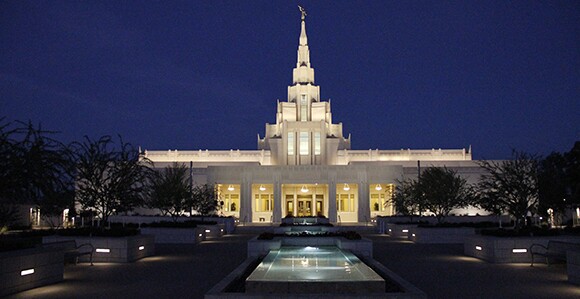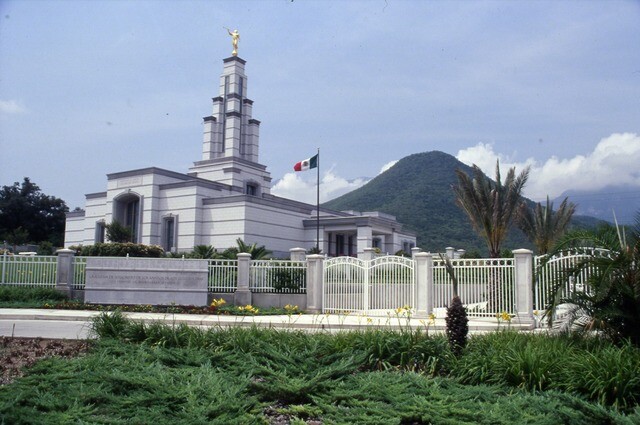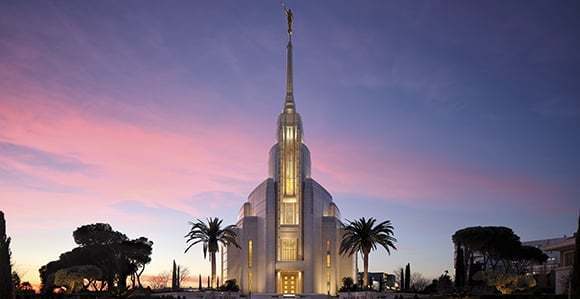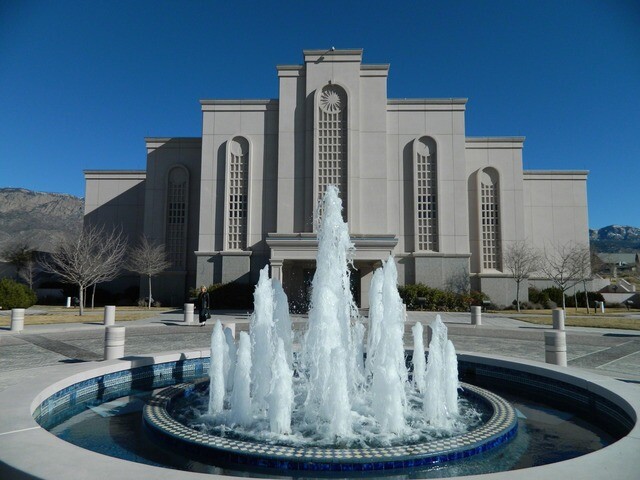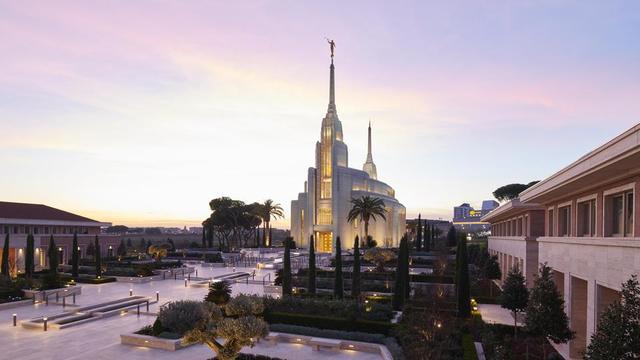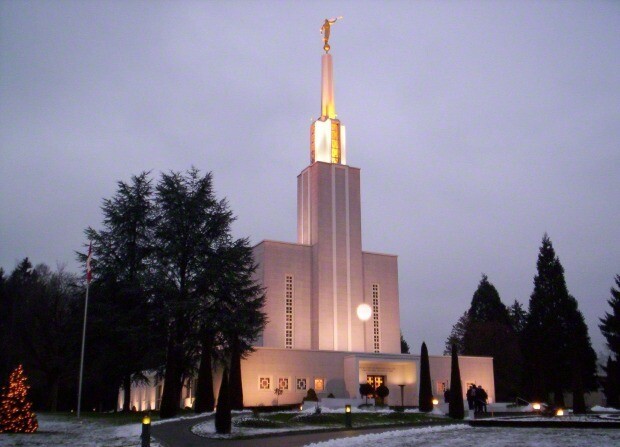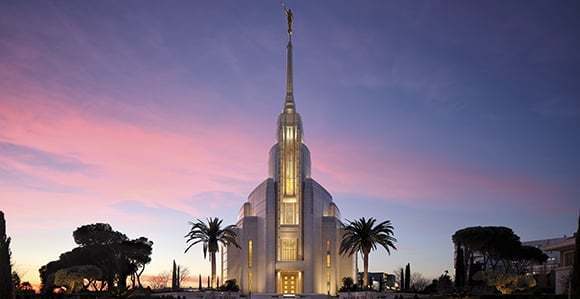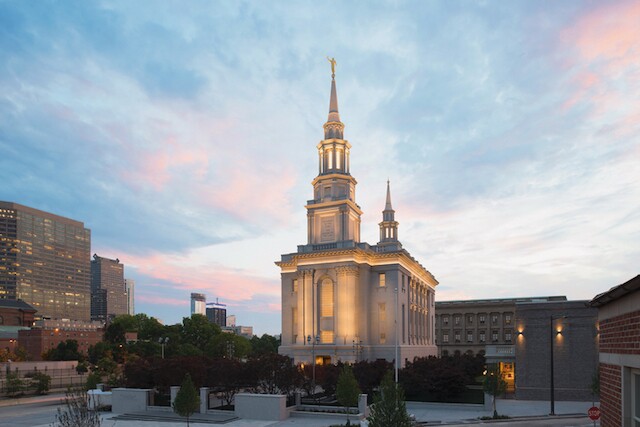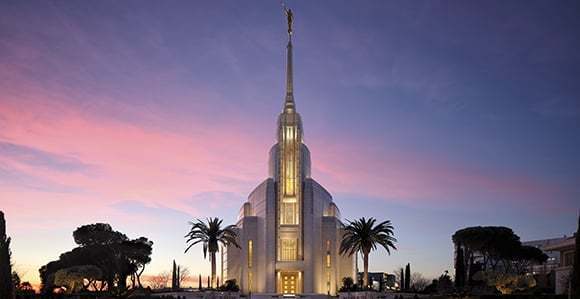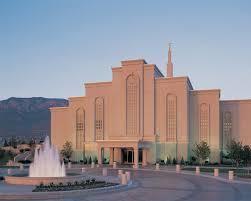There's an excitement felt by all members when a new temple is announced. Whether these temples are built in a nearby city, state, province, or country across the world, it's exciting to see temples continue to dot the earth and bring eternal blessings to Latter-day Saint families.
But most of the time, temples do not come without sacrifice. The process of acquiring land for temples and constructing these beautiful houses of the Lord can be difficult. However, the work of the Lord cannot be stopped. Whether through mission fasts or testimonies, here are seven temples that were able to be built despite opposition.
1. Rome Italy Temple
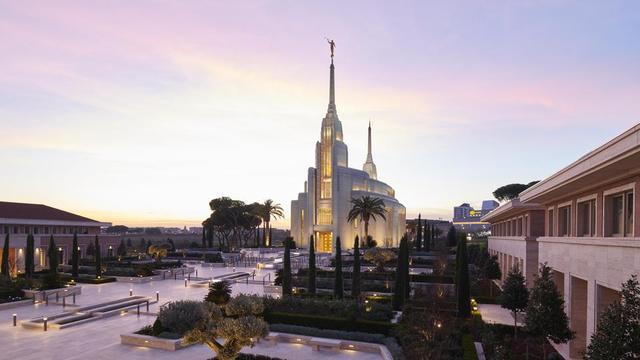
Image from newsroom.com
The history of acquiring land for the Rome Italy Temple begins far before its groundbreaking in October 2010.
In 2000, Church officials began a lengthy process for a concordat with the Italian government that would grant the Church state-sponsored status, according to churchofjesuschristtemples.org.
During this process, an Italian government official made a trip to Salt Lake City, Utah, where two sister missionaries from Italy assisted him in his tour of Temple Square. The government official was so impressed with the tour that when he met with Elder Dieter F. Uchtdorf and other Church leaders in 2006, the official helped push the Church's state-sponsored status through to parliament.
► You'll also like: CNN Addresses the Role the Vatican Played in the Rome Italy Temple
In 2010, the Italian government approved an Intesa that would grant the Church the highest status given to religions in Italy, elevating the Church's status from a charitable foundation to an official religion. With the Intesa approved, former obstacles that sometimes interfered with Church leaders performing marriages or get visas for missionaries and mission presidents were lessened.
However, there was still one other obstacle when it came to building a temple in Italy. Building sites in Rome must be inspected for Roman ruins before the construction process can begin. If any ruins are found, the site cannot be developed. Before the inspection, Church members in Rome held a special fast. In nothing short of a miracle, no ruins were found during the inspection despite a small Roman village being discovered just 100 yards outside the property.
► You'll also like: Rome Italy Temple: See Photos of the Construction from Start to Finish
The groundbreaking ceremony for the temple was held October 23, 2010, and now, nine years later, the dedication is scheduled for March 10–12, 2019.
2. Paris France Temple
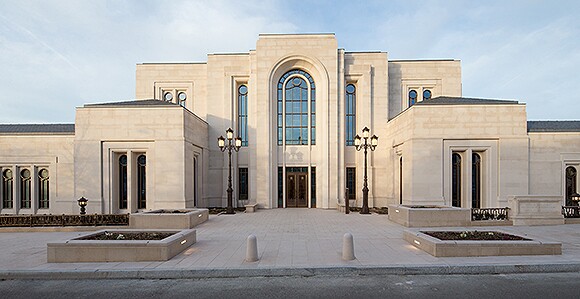
Image from lds.org
In October 2010, the Church and two other parties had applied to purchase properties that were up for lease in the Le Chesnay, France, area, a western suburb of Paris. At the time, two other parties were also interested in properties in the area, but when the Church submitted detail plans for the temple, Mayor Philippe Brillault argued that the temple was the strongest and most profitable option.
► You'll also like: The Paris France Temple "Will Lead to Other Temples," President Eyring Says at Dedication
However, erroneous beliefs that the Church was a cult did cause some opposition—after the building permit was issued, four appeals against the approval were received by the mayor, along with an online petition. Though none of the four appeals were granted, one applicant said the rejection only furthered his resolve to take the matter to court, and two administrative appeals were soon also file. However, the building process moved forward.
On June 13, 2014, Elder Neil L. Andersen met with approximately 60 people involved in the construction process in the Versailles chapel because the administrative appeals had been denied by the court, and the Church was free to move forward with the temple construction.
► You'll also like: Watch: Breathtaking Video Takes You on Tour of Paris Temple for Its 1-Year Anniversary
On May 21, 2017, the Paris France Temple was dedicated, becoming the first temple in mainland France.
3. Albuquerque New Mexico Temple
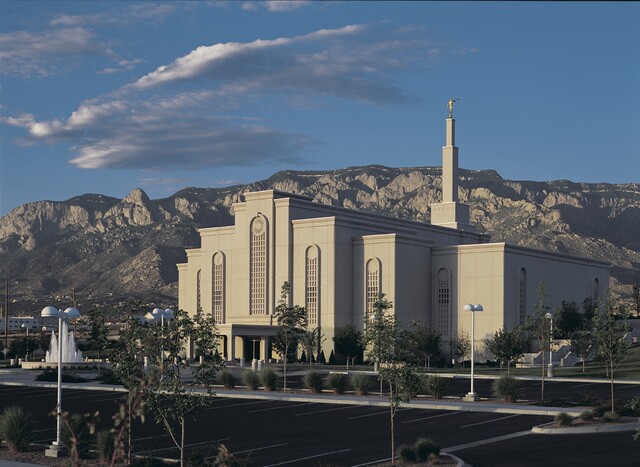
Image from lds.org
When problems arose with gaining the city's approval for the Albuquerque New Mexico Temple, the youth in Albuquerque, New Mexico, held a special fast. Approval was granted, but the youth fasted again, this time to receive construction workers to work on the temple.
At the groundbreaking ceremony, Elder Lynn A. Mickelsen, who presided over the ceremony, stated, "It is our responsibility as members of the Church to live our lives in such a way that the trust [the local city and county officials, administrators and staff, friends and neighbors, and local media] have deposited in us will not be unwarranted." He continued, "It is during these special moments that we can feel and see the hand of the Lord moving in the work. It manifests a pattern of faith for your children, and they will make the same commitments to consecrate their lives to that which is good, honorable, and right."
The Albuquerque New Mexico Temple was dedicated March 5, 2000, and was the first temple in New Mexico.
4. Monterrey Mexico Temple
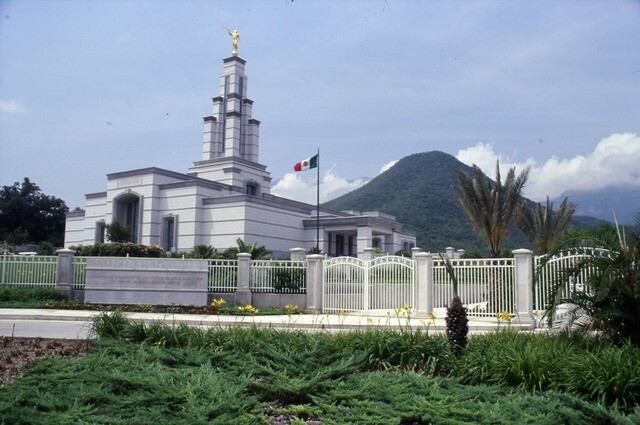
Image from lds.org
The site for the Monterrey Mexico Temple, which was announced on December 21, 1995, was originally selected near Colegio Labastida on Avenida Vasconcelos in San Pedro. However, after winning a three-year legal suit filed by opposing neighbors, the Church felt it was best to select another site.
On November 4, 2000, five years after the temple announcement, the Church celebrated the Monterrey Mexico Temple groundbreaking ceremony. And on April 28, 2002, the completed temple was dedicated by President Gordon B. Hinckley.
5. Bern Switzerland Temple
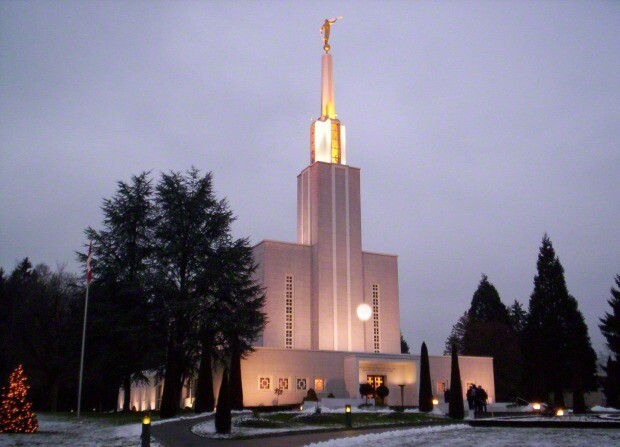
Lead image from lds.org
In 1952, President David O. McKay approved a site for the Bern Switzerland Temple and set Samuel E. Bringhurst, president of the Swiss-Austrian Mission, in charge of purchasing the property.
However, 30 heirs also expressed interest in the property, and much time was spent negotiating the purchase. During this time, President Bringhurst held a mission-wide fast for a resolution. The next day, the owner of the property withdrew it from the market. President Bringhurst, working with a real estate agent, found three other properties, but each become unavailable one after another
"I prayed earnestly for guidance," President Bringhurst wrote in the book Temples of the Most High, "and accompanied by Mrs. Bringhurst, drove back to decide between the remaining two properties. The one considered choice number two the day before now seemed to be more desirable. [As] we walked over it, all doubt seemed to leave and we felt certain we were on the site the Lord wished for the first European temple."
The Church purchased the property and held a groundbreaking ceremony on August 5, 1953, for the first temple in Europe. The dedication was held on September 11–15, 1955.
6. Philadelphia Pennsylvania Temple

Image from lds.org
When President Thomas S. Monson announced that a temple would be built in Philadelphia on October 2008, Dean M. Davies and other representatives from the Church were sent to find suitable properties.
After searching, the Church found two sites were available right across the street from each other. The first property owner accepted the Church's offer without negotiation while the other owner countered with a price that was four times what the Church had offered. After asking the first property owner why he accepted the initial offer, the property owner said he had owned the undeveloped lot for 25 years and always felt it had "a higher and better purpose," Davies said during a visit to BYU.
But as plans went forward to purchase the first property, the city of Philadelphia through a city-controlled agency filed a legal claim that stopped the transaction, wanting to take the title property themselves, Davies says. Though the Church tried everything to remove the claim, it was unsuccessful.
As a last resort, the Church sent an appeal to the mayor, and Davies along with the temple architect, an Area Seventy, and two local Church members, including former Philadelphia Eagles' NFL player Vai Sikahema. Though it looked like the mayor had already made the decision to use the property for commercial purposes, Sikahema stood and said something that changed the course of the meeting.
"In a humble voice, he went on to say something like this: 'Mr. Mayor, many years ago as a young boy in Tonga, my father and my mother and my brothers and my sisters sold our home, we sold fruits and vegetables, we sold everything we could to have enough money to travel to Hamilton, New Zealand to be sealed as an eternal family,'" Davies says. "'You need this temple. This temple will bless your city. This temple will bless your community. It will bless the people.'"
After the meeting, the mayor approved the Church's purchase of the site.
► You'll also like: Beautiful Video Tour Takes You Through the Philadelphia Pennsylvania Temple
On September 17, 2011, the Church held the groundbreaking ceremony for the Philadelphia Pennsylvania Temple. On September 18, 2016, the temple was dedicated and became the first temple in Pennsylvania.
7. Phoenix Arizona Temple
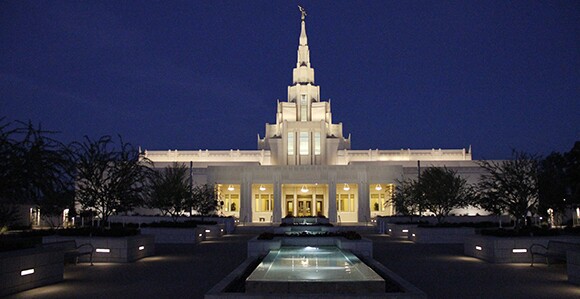
Image from lds.org
When plans for building a temple in Phoenix, Arizona, began moving forward, residents expressed concern that the temple would add light pollution, block mountain views, add traffic to the area, and would have no benefit for those who didn't belong to the Church, according to churchofjesuschristtemples.org.
And as plans for building the temple progressed and rezoning the property of the temple was considered to accommodate its 40-foot-tall design, some residents voiced their opinions against the rezoning and the temple's design.
On November 22, 2009, 30 people with picketing signs stood outside the temple site protesting the rezoning of the property. When the Pheonix City Council approved the rezoning, a petition with 16,000 signatures was sent to the city officials of Pheonix to overturn the decision.
However, on January 26, 2010, the Church announced the temple would be redesigned to comply with residential zoning with a height limit of 30 feet instead of the proposed 40 feet in addition to plans to change the color of the exterior of the temple from white to an earth-tone to help with lighting concerns. On November 30, 2010, the council approved the redesign, which met the residential zoning standards.
► You'll also like: 7 First-glimpse Photos of the New Phoenix Arizona Temple
Despite these changes, on January 29, 2011, opponents met with a wall of protest signatures, a 27-foot inflatable gorilla, and a helium balloon floating to the approximate height of the proposed temple spire. However, the new designs were within residential zoning requirements and the redesign met the protestor's initial concerns about height, so a building permit was approved by the city before a groundbreaking ceremony was held on June 4, 2011. The temple was dedicated on November 16, 2014.
Lead images from mormonewsroom.org and lds.org
